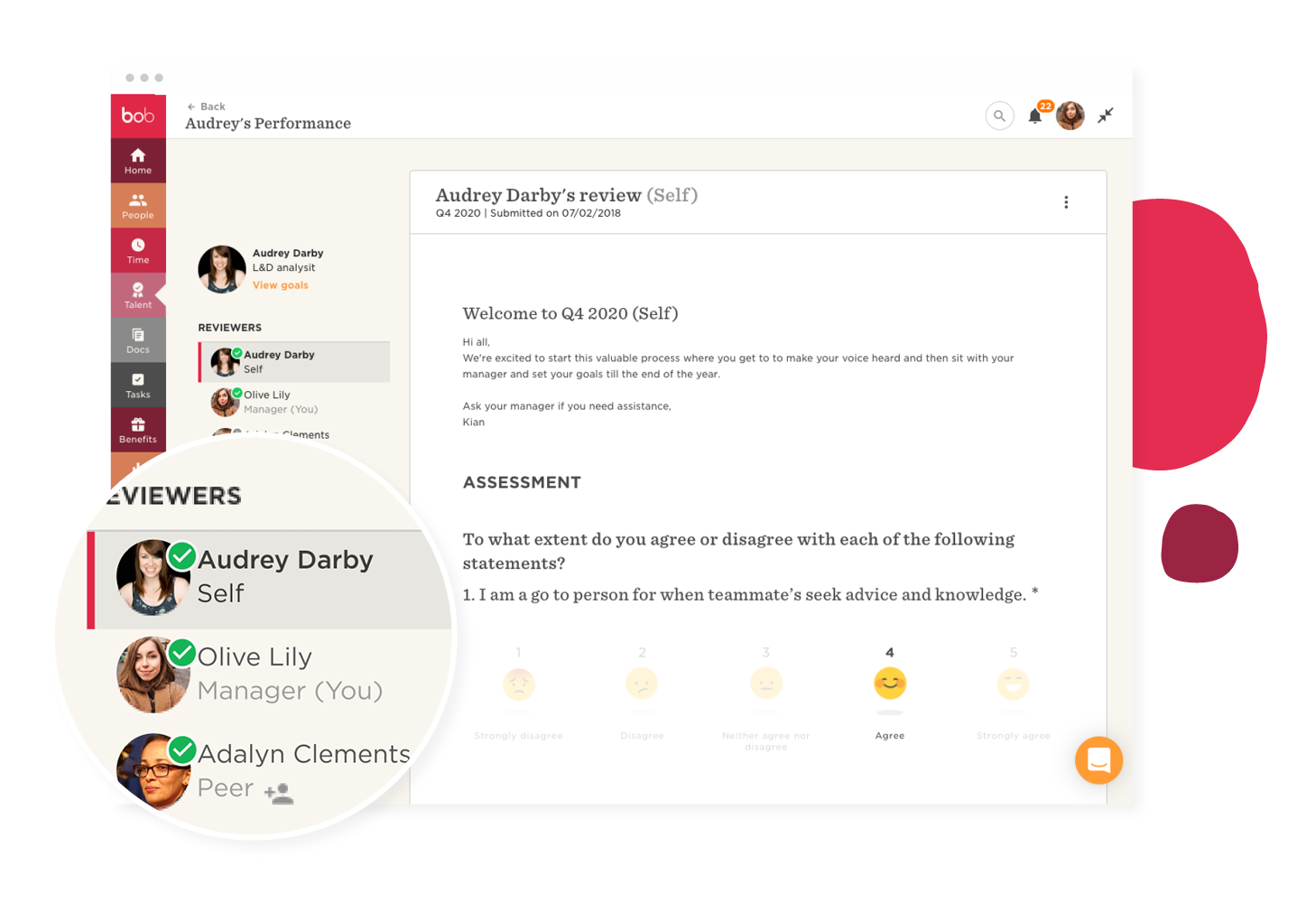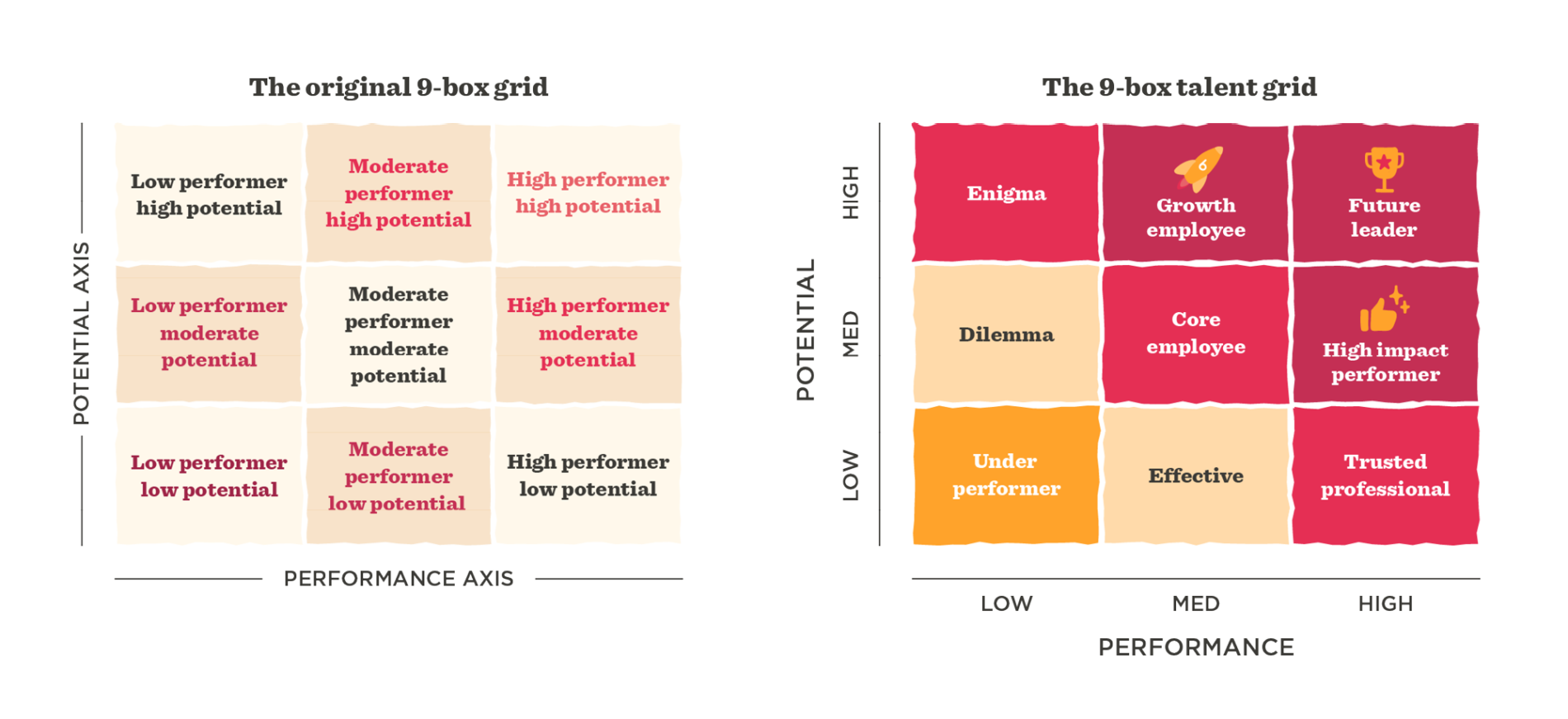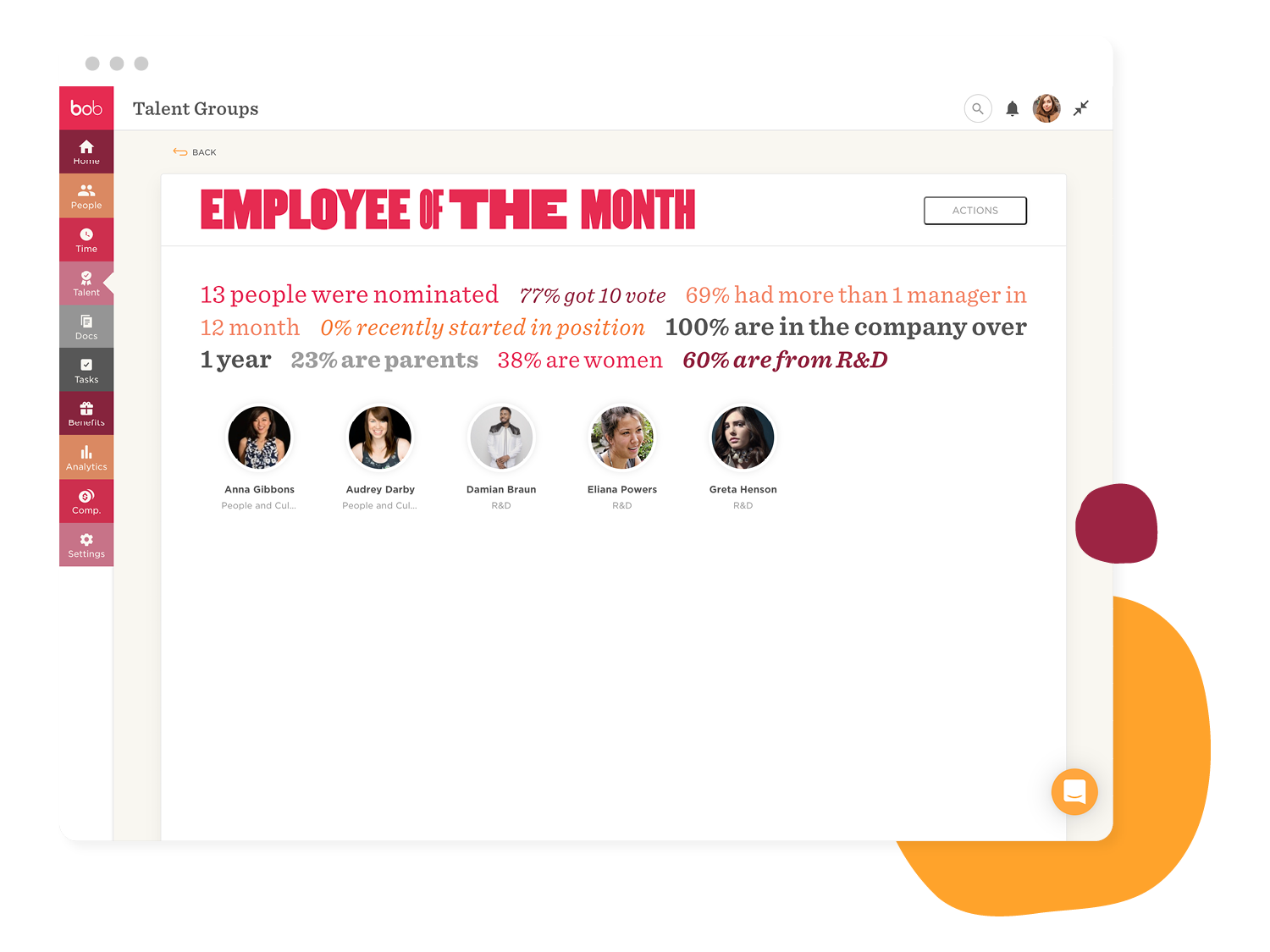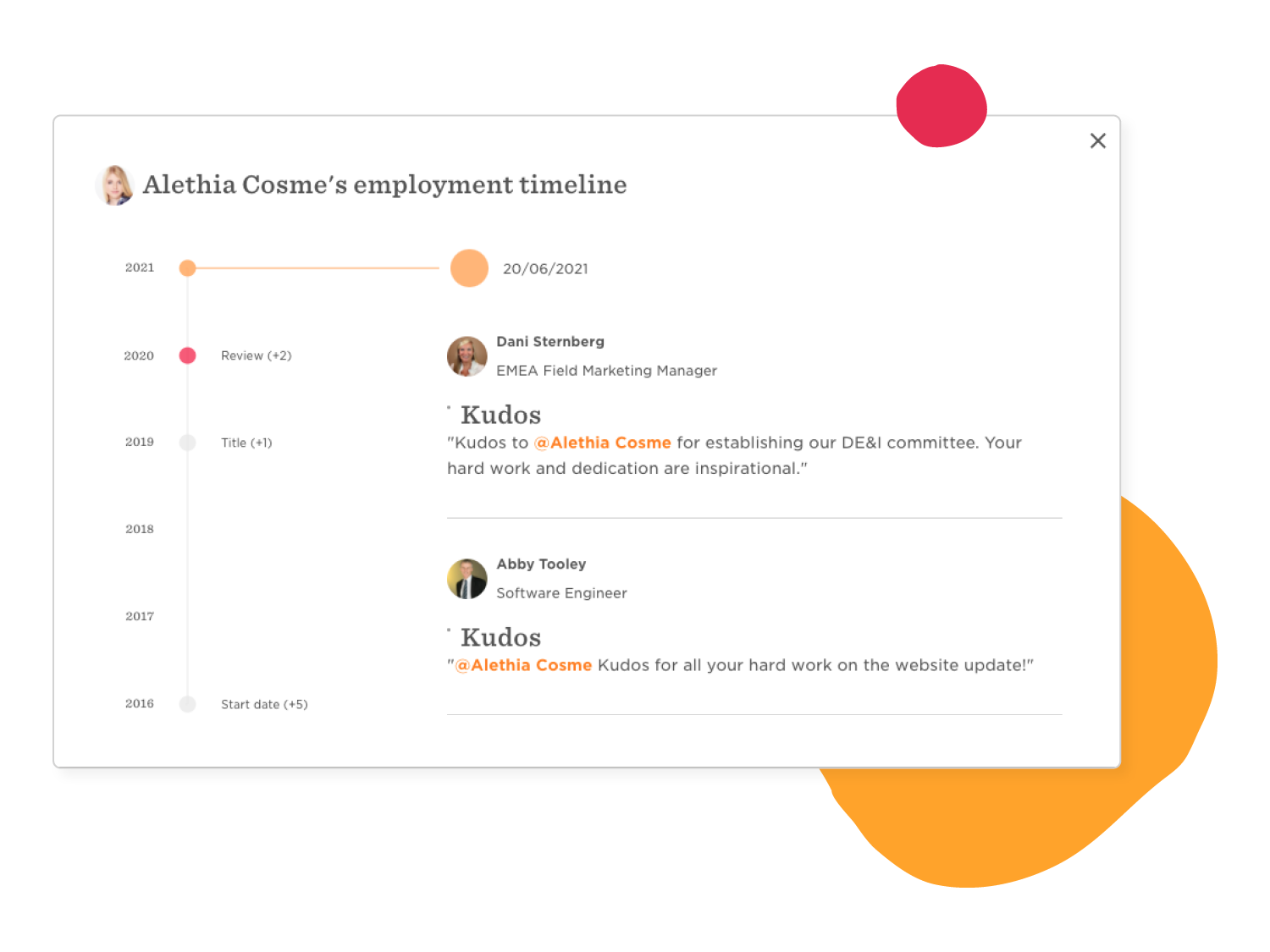Companies frequently use performance reviews or appraisals to evaluate how their employees are performing at work. Traditionally, these reviews are run annually and involve a formal discussion between the manager and employee where the manager lists the employee’s positive and negative traits regarding the quality of their work, their productivity, and their general attitude. In some organizations, the manager awards the employee with an overall grade or performance rating, which HR and managers can use for comparing and evaluating employees in the company. These types of performance reviews are generally top-down, waive the right for employees to provide their own feedback, and do little to empower them to succeed. The overall result is an uncomfortable situation for everyone involved.
The contemporary approach to performance reviews involves continuous feedback between the manager and the employee. Rather than waiting for a once-a-year evaluation, reviews are conducted every six months, quarterly or even monthly. This method enables any issues to be continuously addressed and hopefully quickly resolved—rather than waiting until the prescribed date, when it may be too late.
As well as providing an opportunity for discussing employee progress, company decision-makers often use performance reviews to recognize those employees that stand out and have made an impact, whether in terms of their performance or “can do” attitude. These exceptional employees may be rewarded with raises, bonuses, or promotions.
While performance reviews are beneficial for identifying top performers, they are not the only method used by companies. Bob offers several ways for HR and managers to get to know their employees better and understand their contributions to the company. So let’s dive right in!
Bob’s 360-degree performance reviews
Performance reviews do not need to be strictly a manager and employee affair. Many modern companies now use 360-degree performance reviews to gain a more balanced and subjective view of their employees. This involves collecting feedback about the employee from numerous people within the company, such as the employee’s co-workers, direct manager, and direct reports, as well as requesting the employee to fill out a self-evaluation form. This type of all-encompassing appraisal enables HR to gain insights into the employee beyond their relationship with their direct manager.
Bob provides you with the tools to run performance reviews the way you want to. For example, you can decide if you’re going to run 360-degree reviews, which team members will be involved in the process, how often to run them, and if you wish to keep all reviews anonymous. You also get to choose the attributes you want to focus on and measure during the review and structure the questions you want to ask. Managing performance in Bob is completely flexible, enabling companies to own the process and structure it according to their unique needs.

Bob’s performance mapping
Performance reviews regularly generate numerical scoring or performance ratings which HR and managers can use as a basis for evaluating employees. High-scoring employees can be singled out as top performers or as key influencers within the company, and HR may use these scores as a basis for merit increases or promotions.
Many companies use performance ratings to map their employees on a nine-box talent matrix. The 9-box grid was initially created in the 1970s by McKinsey for its client, GE, to strategically map and evaluate its 175 business units. Companies have adopted this grid for evaluating their employees by measuring “potential” on the y-axis and “performance” on the x-axis. Companies use the scoring from employee performance reviews that rate their potential and performance to map them on the 9-box grid.

While this method can help HR identify those employees scoring high for performance and potential as future leaders, it has its limitations. Many managers find it difficult to differentiate between their employees’ performance and potential. Also, it is rare to find an employee who is a high performer with low potential or a low performer showing high potential. Another factor to consider is whether it really makes sense for companies to only evaluate their employees based on their performance and potential?
With Bob’s performance mapping, HR and managers can take any two attributes measured in Bob’s performance reviews and use them as the basis for mapping their employees. Companies can decide which values are important for them as a company or choose different attributes per department, so for example, they can measure “creativity” and “engagement” for employees working in marketing, while “attention to detail” and “willingness to go the extra mile” can be measured for employees working in the product management team.
Bob’s performance mapping offers a flexibility that doesn’t exist using the standard 9-box but enables HR and managers to gain a holistic view of their employees and identify those that are, or show signs of becoming, top performers, key influencers, or future leaders within the company.
Bob’s Talent Groups
Performance reviews are just one way of identifying your company’s key influencers and future leaders. Located in Bob in the talent module under Surveys, Bob’s Talent Groups are designed to help HR and other decision-makers gather real and unbiased insights about their employees.
Using Talent Groups, you can ask a select number of people in the company to nominate a fellow employee for a particular role or talent by asking a single question. For example, “Who would you nominate as the top performer in your team?” “Who do you think would make the best emcee for our upcoming company event?” or “Who would you nominate as Employee of the Month?”
Talent Groups are completely flexible and simple to use:
- Name your group (or category)
- Compose your question
- Select the people (nominators) that you want to ask
Bob saves all nominees and Talent Groups for your future reference.

Recommended For Further Reading
Bob’s Kudos
Bob’s Kudos are for publicly celebrating an employee or team achievement. Whether it’s a job well done, exceeding a sales target, or participating in an employee resource group (ERG), Bob’s Kudos make the accomplishment official by posting it on your Bob company homepage and through your Slack channels.
All Kudos that recognize individual employees are saved on their personal employment timelines, creating a record of their achievements and recognition by others. HR and other decision-makers can review these Kudos and use them as a basis for identifying top performers or who to reward in the company.

Get to really know your employees
The traditional top-down performance review as a once-a-year opportunity to recognize employees is losing its favor against more continuous and inclusive methods that drive engagement and empower employees to succeed.
As your single source of truth, Bob has everything you need to evaluate, support, engage, and empower your employees. From running performance reviews your way, conducting 360-degree reviews that achieve a more balanced and subjective view of your employees, and performance mapping to gain a more holistic view of your employees and identify your future leaders.
Bob also helps you discover insights about your employees’ unique talents and how they are regarded by their peers and celebrate and review their work accomplishments. Bob offers so much more than a regular HRIS—providing you with the tools to really get to know your people and provide them with the best employee experience.
